Parts of books of Nahum and Zechariah, world’s oldest woven basket, 6,000-year-old mummified child,
Bar Kochba Revolt coins among stunning finds from daring Judean Desert rescue op
By AMANDA BORSCHEL-DAN, TOI
In a stunningly rare discovery, some two dozen 2,000-year-old biblical scroll fragments have been excavated from Judean Desert caves during a daring rescue operation. The newly discovered scroll fragments are Greek translations of the books of Zechariah and Nahum from the Book of the Twelve Minor Prophets, and are written in two scribal hands. Only the name of God is written in Hebrew in the texts.
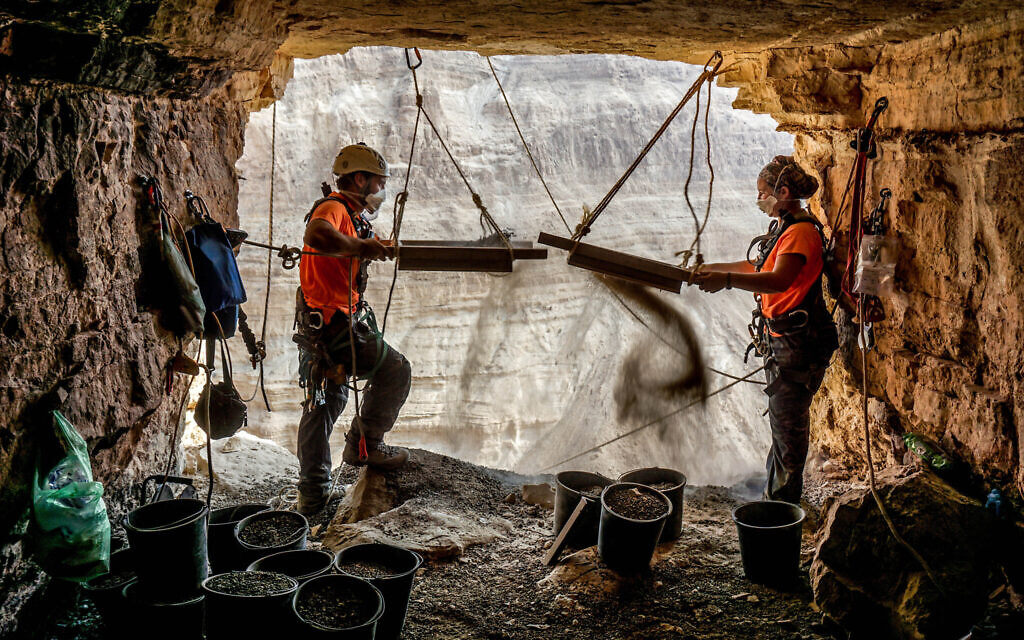
Archaeologists Hagay Hamer and Oriah Amichai sieving finds at the entrance to the Cave of Horror. (Eitan Klein, Israel Antiquities Authority)
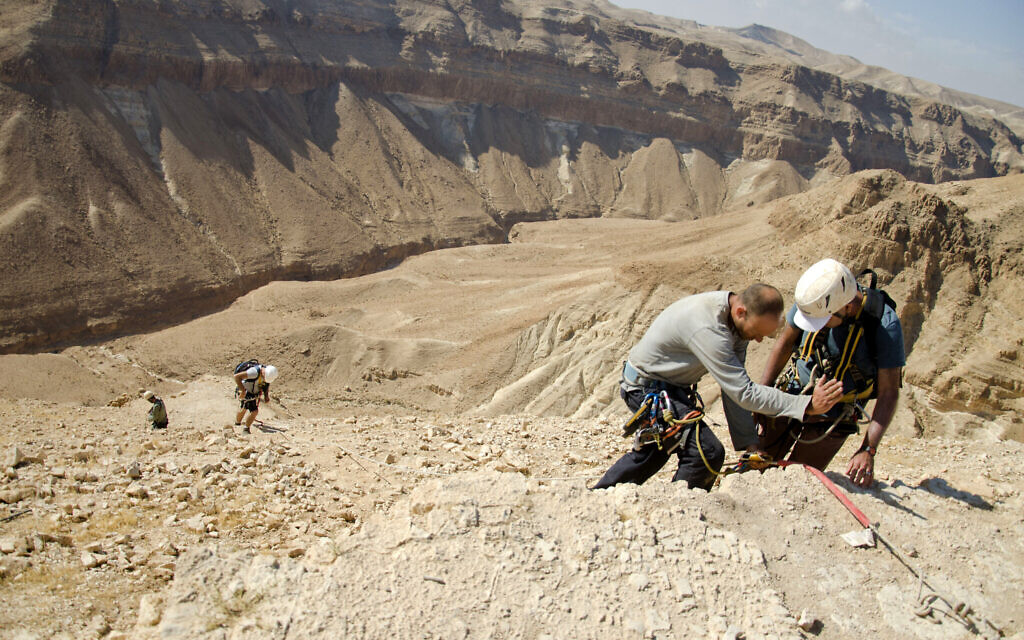 Rappelling to the Cave of the Skulls. (Yoli Schwartz, Israel Antiquities Authority)<
Rappelling to the Cave of the Skulls. (Yoli Schwartz, Israel Antiquities Authority)<
> Excavations in Muraba‘at Cave. (Yoli Schwartz, Israel Antiquities Authority)<
Excavations in Muraba‘at Cave. (Yoli Schwartz, Israel Antiquities Authority)<
>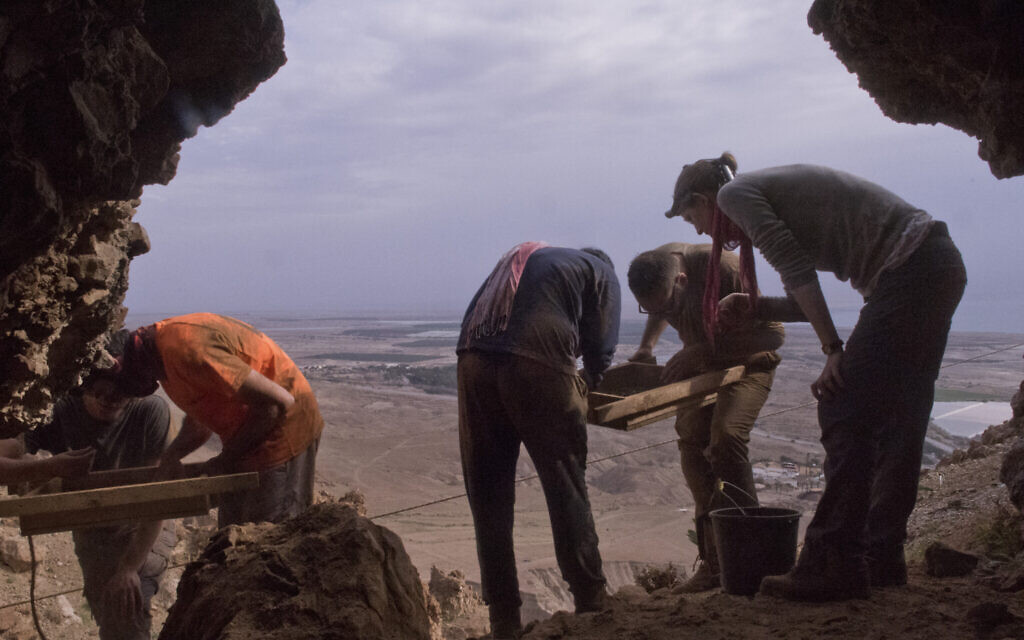 Excavations at Qumran. (Shai Halevi, Israel Antiquities Authority)<
Excavations at Qumran. (Shai Halevi, Israel Antiquities Authority)<
>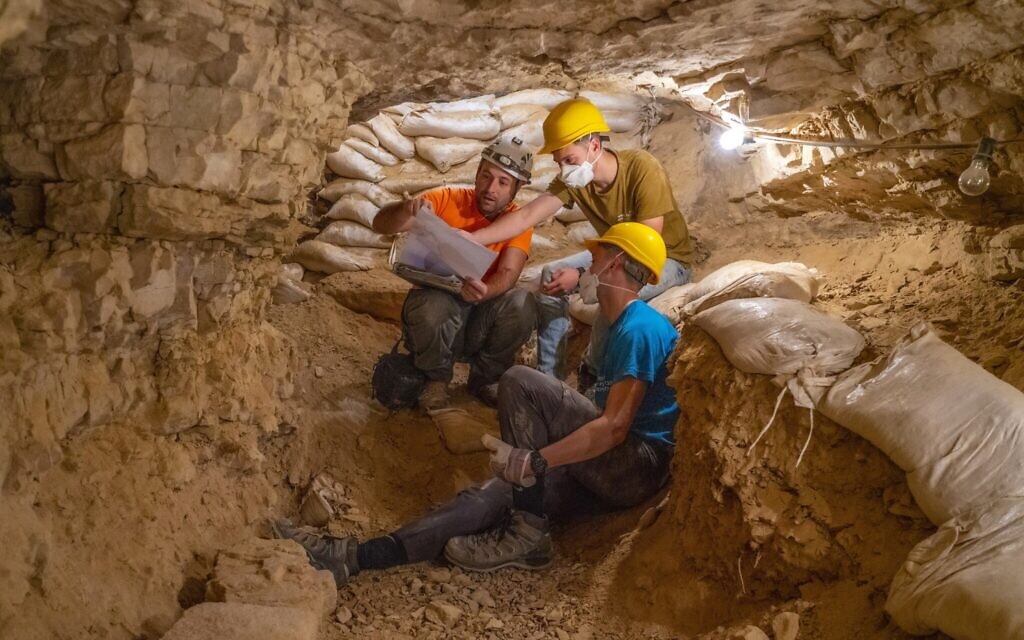 Dozens of youths from pre-military preparatory programs participated in the excavations. (Yaniv Berman, Israel Antiquities Authority)<
Dozens of youths from pre-military preparatory programs participated in the excavations. (Yaniv Berman, Israel Antiquities Authority)<
> The discovery of the 10,500-year-old basket by preparatory program students. (Yaniv Berman, Israel Antiquities Authority)
The discovery of the 10,500-year-old basket by preparatory program students. (Yaniv Berman, Israel Antiquities Authority)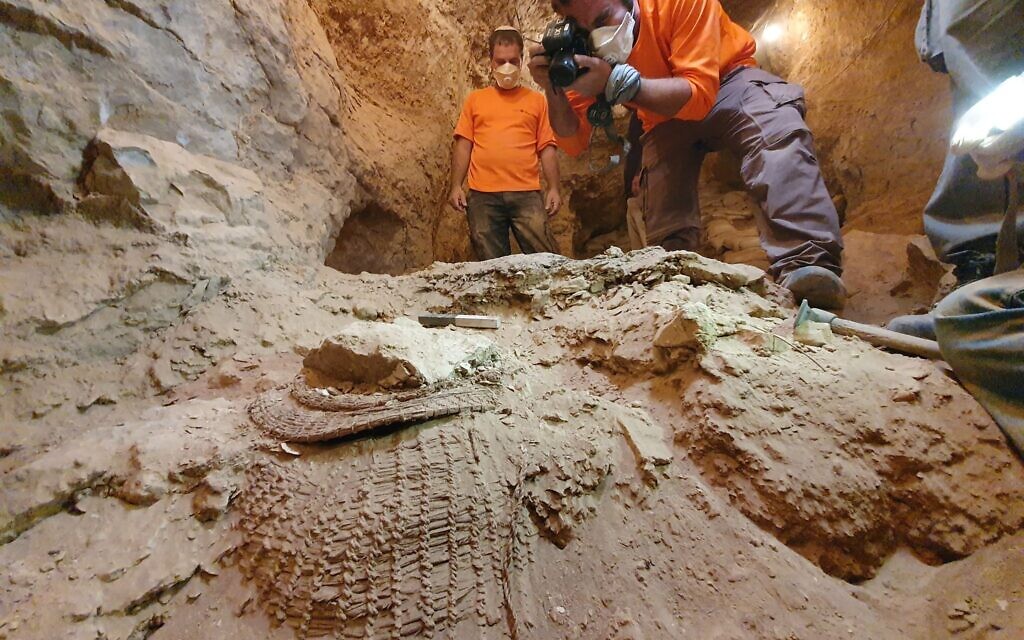 The basket as found in Muraba‘at Cave. (Yoli Schwartz, Israel Antiquities Authority)<
The basket as found in Muraba‘at Cave. (Yoli Schwartz, Israel Antiquities Authority)<
> Arrowheads from the Roman period discovered in the Judaen Desert operation.(Dafna Gazit, Israel Antiquities Authority)<
Arrowheads from the Roman period discovered in the Judaen Desert operation.(Dafna Gazit, Israel Antiquities Authority)<
>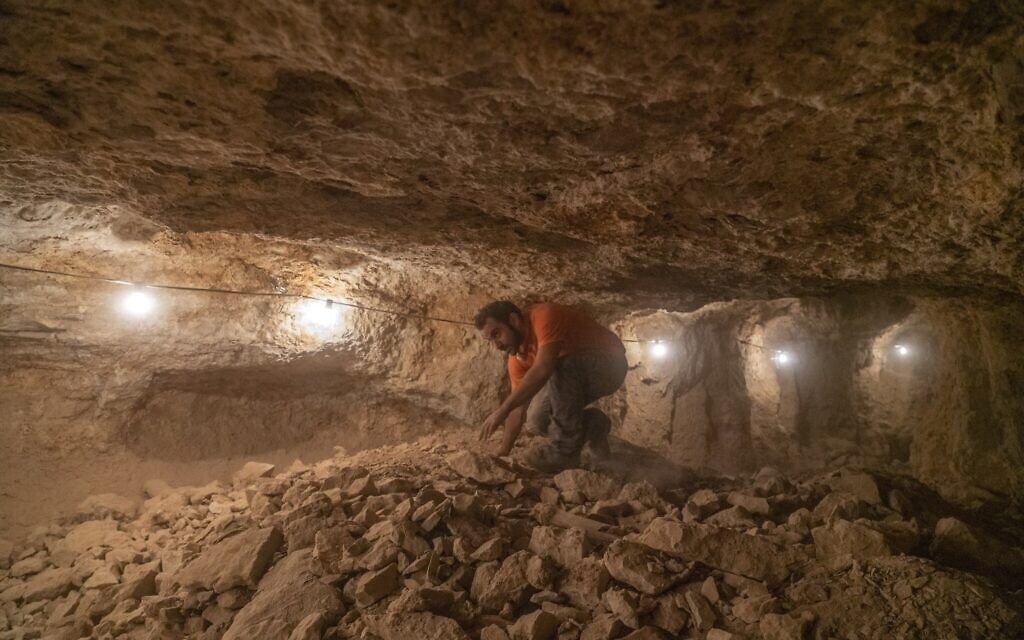 The excavation of the caves was conducted in difficult conditions (Yaniv Berman/IAA)<
The excavation of the caves was conducted in difficult conditions (Yaniv Berman/IAA)<
>
The 20-odd fragments were found in the so-called Cave of Horror in Nahal Hever, which is some 80 meters (260 feet) below a cliff top. According to an Israel Antiquities Authority press release, the cave is so-named because it is “flanked by gorges and can only be reached by rappelling precariously down the sheer cliff.”
Along with the “new” biblical scroll fragments from the Books of the Minor Prophets, the team excavated a 10,500-year-old perfectly preserved woven basket — the oldest complete basket in the world — and a 6,000-year-old mummified skeleton of a child, tucked into its blanket for a final sleep.
Since 2017, the IAA has spearheaded an unprecedented rescue operation to salvage ancient artifacts from caves throughout the Judean Desert against the rampant looting that has occurred in the area since the much-heralded — and lucrative — discovery of the Dead Sea Scrolls by Bedouin shepherds some 70 years ago. On Tuesday morning, a sample of the dazzling discoveries were unveiled for the first time.
“The desert team showed exceptional courage, dedication and devotion to purpose, rappelling down to caves located between heaven and earth, digging and sifting through them, enduring thick and suffocating dust, and returning with gifts of immeasurable worth for mankind,” said Israel Antiquities Authority’s director Israel Hasson, who led the widespread rescue operation, in an IAA press release.
Israel Hasson, director-general of the Israel Antiquities Authority, in the desert operation. (Israel Antiquities Authority)<
“The newly discovered scroll fragments are a wake-up call to the state. Resources must be allocated for the completion of this historically important operation. We must ensure that we recover all the data that has not yet been discovered in the caves before the robbers do. Some things are beyond value,” Hasson said.
In an optimistic attempt to be one step ahead of looters, an inter-departmental national project was launched in 2017 to survey Judean Desert caves. Promising caves were subsequently excavated at some colorfully named locations, including the Cave of Horror and the Cave of Skulls. The operation was undertaken by the IAA, in cooperation with the Staff Officer of the Archaeology Department of the Civil Administration in Judea and Samaria, and funded by the Ministry of Jerusalem Affairs and Heritage. The vast majority of the Judean Desert, including the original source of most of the Dead Sea Scrolls at Qumran, is located in the West Bank beyond the Green Line.
“For years we chased after antiquities looters. We finally decided to pre-empt the thieves and try reaching the artifacts before they were removed from the ground and the caves,” said Amir Ganor, head of the IAA’s Theft Prevention Unit.
So far, some 80 kilometers (50 miles) have been systematically surveyed by three teams led by IAA archaeologists Oriah Amichai, Hagay Hamer and Haim Cohen. Using drones and high-tech rappelling and mountain-climbing gear, archaeologists and a team of volunteers from pre-military academies were able to access “unreachable” caves — some of which hadn’t been entered by man for almost two millennia.
The biblical scrolls are among the highlights of the newly excavated artifacts, but are by no means the only extraordinary discoveries:
‘New’ biblical scrolls
Opening a scroll section in the Israel Antiquities Authority’s conservation laboratory. (Shai Halevi, Israel Antiquities Authority)
Looters and archaeologists alike have combed the Judean Desert since the discovery of the Dead Sea Scrolls some 70 years ago. Aside from two silver scrolls engraved with the biblical Priestly Blessing (from the late 7th to early 6th century BCE) discovered in Ketef Hinnom in Jerusalem, the Dead Sea Scrolls are considered the earliest known copies of the biblical books and span from circa 400 BCE to 300 CE.
The latest finds, two dozen 2,000-year-old biblical scroll fragments from the books of Zechariah and Nahum, were discovered in clumps and rolled up in the Cave of Horror. The conservation and study of the fragments was conducted by the IAA’s Dead Sea Scrolls Unit under Tanya Bitler, Dr. Oren Ableman and Beatriz Riestra.
The team has reconstructed 11 lines of Greek text that was translated from Zechariah 8:16–17, as well as verses from Nahum 1:5–6. Only the name of God appears in Hebrew, written in the Paleo-Hebrew script used during the First Temple period, as well as by some adherents of the Bar Kochba revolt (132–136 CE), including on coinage, and in the Qumran community.
Sections of the scroll discovered in the Judean Desert after conservation. (Shai Halevi, Israel Antiquities Authority)
Among the academic fruit already born of the new discovery is the realization that the “new” text is different from the traditional Masoretic texts. “These differences can tell us quite a bit regarding the transmission of the biblical text up until the days of the Bar Kochba Revolt, documenting the changes that occurred over time until reaching us in the current version,” said the IAA.
Sections of the Book of the Twelve Minor Prophets scroll discovered in the Judean Desert expedition prior to their conservation. (Shai Halevi, Israel Antiquities Authority)
Oldest basket in the world
IKEA would do well to take note of the craftsmanship shown on a stunning woven basket dating from some 10,500 years ago — some 1,000 years prior to the first known pottery vessels — which was hailed by the IAA as “currently unparalleled worldwide.”
The basket as found in Muraba‘at Cave. (Yoli Schwartz, Israel Antiquities Authority)
The massive 90-100 liter (24-26 gallon) volume receptacle was discovered by youth volunteers from the Nofei Prat pre-military leadership academy. The exciting discovery took place in one of the Muraba‘at Caves, which have previously offered up caches of Roman-era papers and Bar Kochba Revolt remnants, which are found in the Nahal Darga Reserve.
The basket is being studied by the IAA’s Dr. Naama Sukenik and Dr. Ianir Milevski and was dated using carbon-14, by Prof. Elisabetta Boaretto of the Scientific Archaeology Unit of the Weizmann Institute of Science.
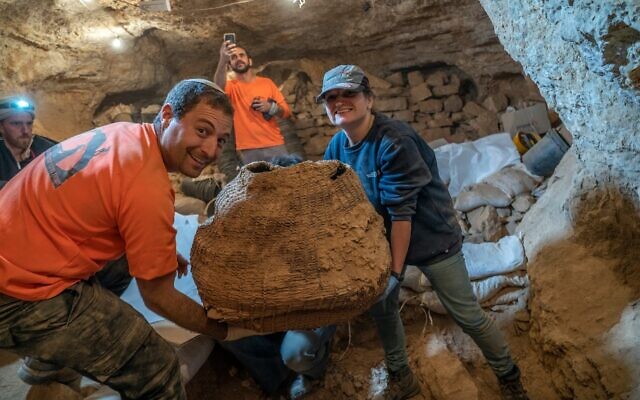
Archaeologists Chaim Cohen and Dr. Naama Sukenik with the world’s oldest basket, as found in Muraba‘at Cave. (Yaniv Berman, Israel Antiquities Authority)
Due to the arid climate of the region, the huge Pre-Pottery Neolithic period basket, woven in a unique style from plant material, was preserved whole. “As far as we know, this is the oldest basket in the world that has been found completely intact and its importance is therefore immense,” said the IAA.
Unfortunately, the basket was discovered empty. “Only future research of a small amount of soil remaining inside it will help us discover what it was used for and what was placed in it,” said the IAA.
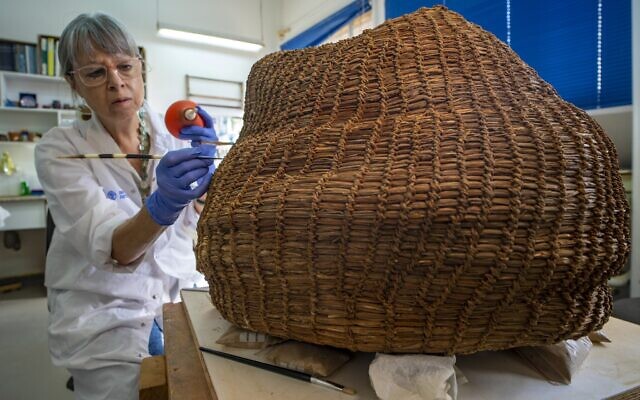
Conservation work on the basket in the Israel Antiquities Authority’s laboratories. (Yaniv Berman, Israel Antiquities Authority)
Mummified child
Some 6,000 years ago, a parent tucked his child in with a blanket for its eternal sleep. The complete skeleton is being researched by the IAA’s Ronit Lupu and Dr. Hila May from the Tel Aviv University School of Medicine, who estimate it was between 6-12 years old, based on a CT scan.
6,000-year-old skeleton of a child who was buried wrapped in cloth. (Emil Aladjem, Israel Antiquities Authority)
Fittingly, the cloth-wrapped child was discovered in the Cave of Horror. According to prehistorian Lupu, after moving two flat stones, the team discovered that a shallow pit had been intentionally dug beneath the stones that held the child’s skeleton, which was placed in a fetal position and covered with a cloth around its head and chest.
Prehistorian Ronit Lupu in the desert operation. (Yoli Schwartz, Israel Antiquities Authority)
“It was obvious that whoever buried the child had wrapped him up and pushed the edges of the cloth beneath him, just as a parent covers his child in a blanket. A small bundle of cloth was clutched in the child’s hands,” said Lupu. Due to the arid conditions in the cave, the child was naturally mummified. The cloth and other organic materials, including hair and even skin and tendons, were likewise preserved.
Bar Kochba stash and cache
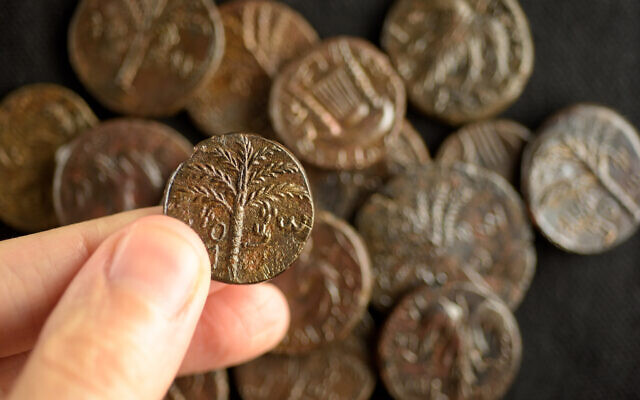
A rare cache from the Bar Kochba period. (Dafna Gazit, Israel Antiquities Authority)
Several of the caves offered random finds left behind by Jewish rebels who fled to the caves at the end of the Bar Kochba Revolt, including a cache of coins minted with Jewish symbols such as a harp and a date palm, an array of arrowheads and spearheads, pieces of woven fabric, sandals and lice combs, which illustrated the everyday items taken by the fleeing Jews.
Head of the IAA’s Surveys Department Dr. Ofer Sion said, “The high cliffs of 300-400 meters [985-1,300 feet] in a single drop with these enigmatic ravines that no one reaches were the ultimate haven. And in one period in human history, families fled to the caves in the Judean Desert, and we really don’t know anything else.”
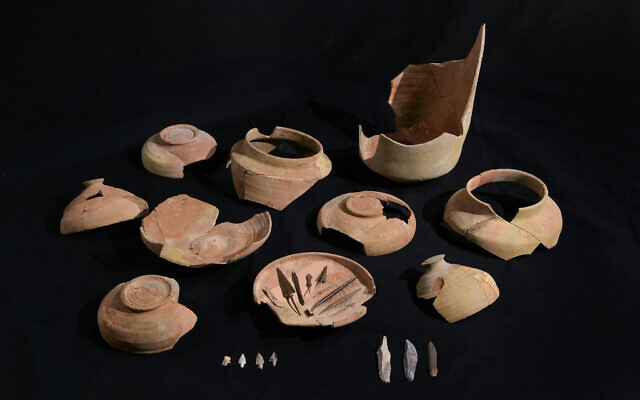
Finds from the caves: fragments of Qumran jars and arrowheads from the prehistoric and Roman periods. (Dafna Gazit, Israel Antiquities Authority)
Archaeologist Oriah Amichai explained that the families clearly planned what they would be taking from home, “when one day, when the war will be finished, what they will be able to use to build a new life. We come here and reconstruct the lives of those who didn’t survive in the end,” she said.
The ongoing operation intends to continue searching for vestiges of the past that connect with all Israeli citizens, regardless of creed. As emphasized by Avi Cohen, the CEO of the Ministry of Jerusalem and Heritage, “These finds are not just important to our own cultural heritage, but to that of the entire world.”
Archaeologist Oriah Amichai holding part of an ancient mat from the desert. (Yoli Schwartz, Israel Antiquities Authority)<

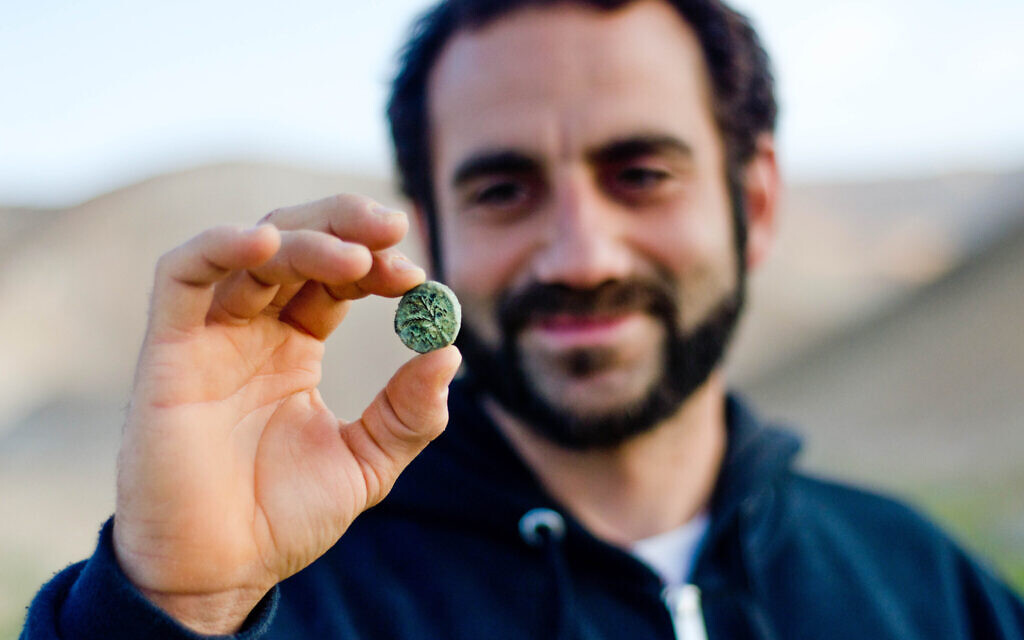 Archaeologist Hagay Hamer holding a Bar Kokhba coin found in the desert. (Yoli Schwartz, Israel Antiquities Authority)<
Archaeologist Hagay Hamer holding a Bar Kokhba coin found in the desert. (Yoli Schwartz, Israel Antiquities Authority)<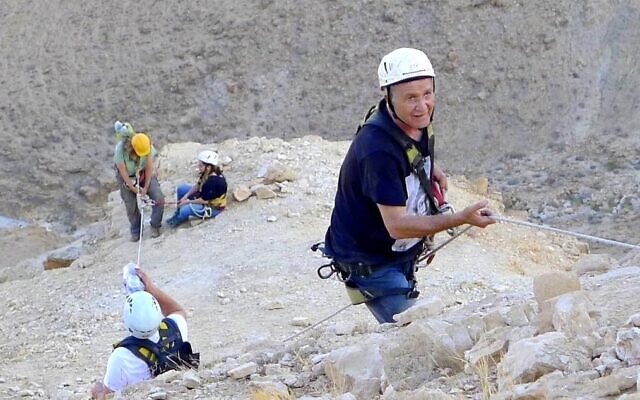
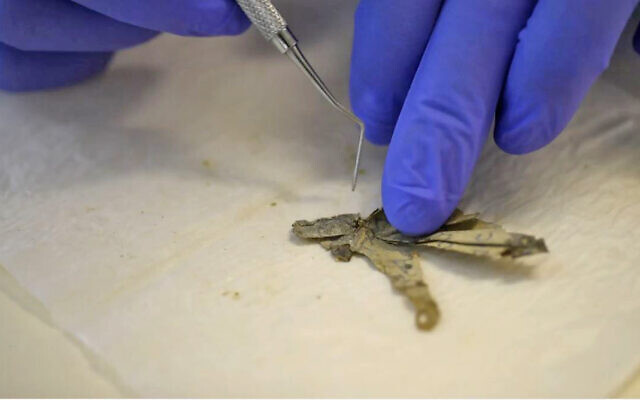
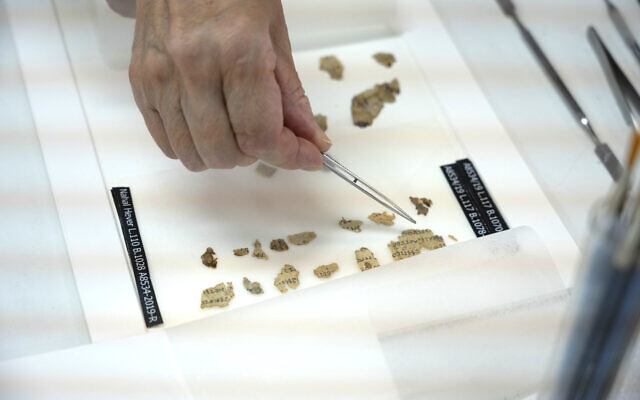
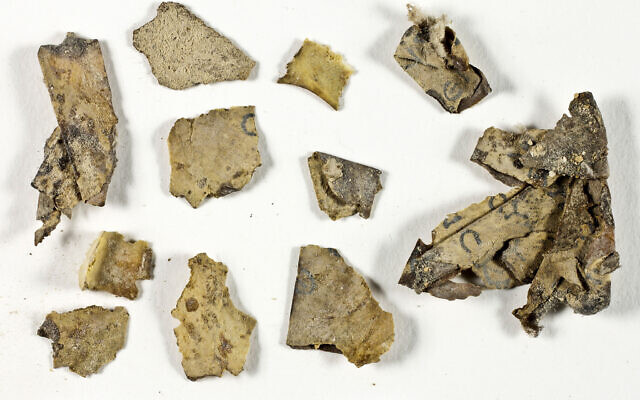
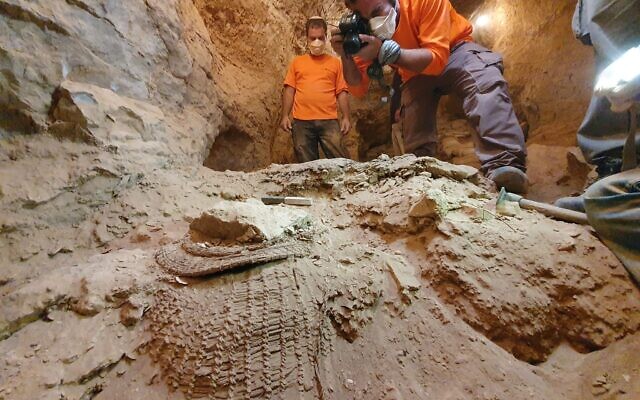
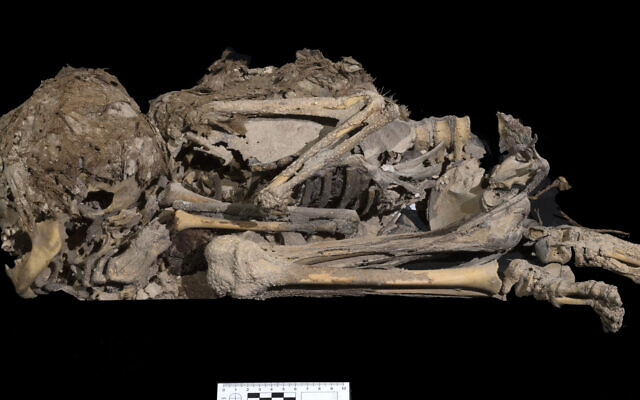
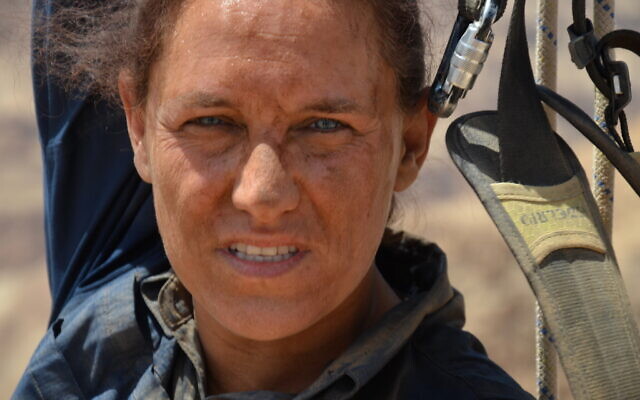
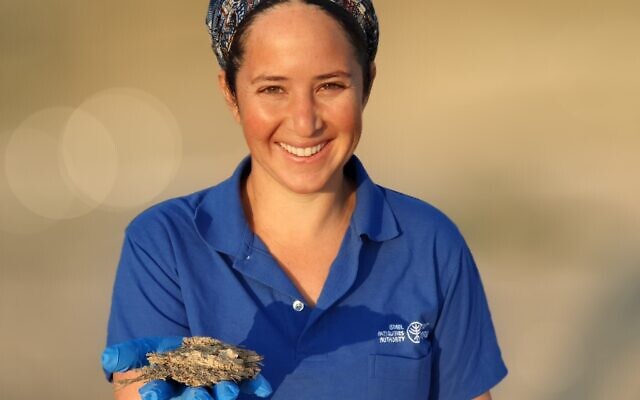


What a wonderful find, unique. Tremendous basket.. Dr. Naama Sukenik must be a granddaughter of Eleazer Sukenik who first attested to the antiquity of the Dead Sea Scrolls. I may have a book by him somewhere, or at least another book devoting several chapters to him. Either the ground levels changed in antiuity or those living in those caves must have had wonderful heads for heights.
Almost impossible to imagine people going up and down nearly 300 ft with the quality of the ropes made 6-8000 years ago. It must have been very chancy. It would have to have been almost a daily chore to being food there for several people.
And, thinking of the Bar Kocheba people who hid there thousands of years later, and what eventually did happen to them. They evidently did not remain there but must have left at some point. How did they find such a hideout..?? We don’t know enough about that period. There may have been stories and legends flying around for thousands of years about that very cave, otherwise how did they happen on it…?